10 Best Tourist Places in PudukkottaiPudukkottai district is conjoined with Ramanathapuram, Trichy, Sivaganga, and Thanjavur. It is a district in one of the Indian states of Tamil Nadu. It holds a considerable amount of rich cultural heritage with remarkable historical monuments, temples, cave paintings, fortresses, temples, and palaces. Villages in the district are traced back to the ancient foundation and have roots in Tamil Sangam Literature. Pudukkottai is graced with natural resources, and the sea binds it. Places of interest in the Pudukkottai are tanks, canals, and fortresses built during the rule of Ancient Tamil Kings. Apart from this, some of the prominent temples located in this place are Chitthannavasal, Avudayarkovli, and Kudumiyanmalai. Some major attraction points are temples and cave temples constructed in the mountains peacock sanctuary in Viralimalai. Ways to ReachPudukkottai is well connected by bus or rail. Daily Bus service is available from big cities of the nation to Pudukkottai. The district does not have an airport. The nearest available airport is Trichy Civil Airport, which is located 44 km far away. Flight Connectivity
Railway Connectivity
Bus Connectivity
Tourist Destinations1. Brahadambal Temple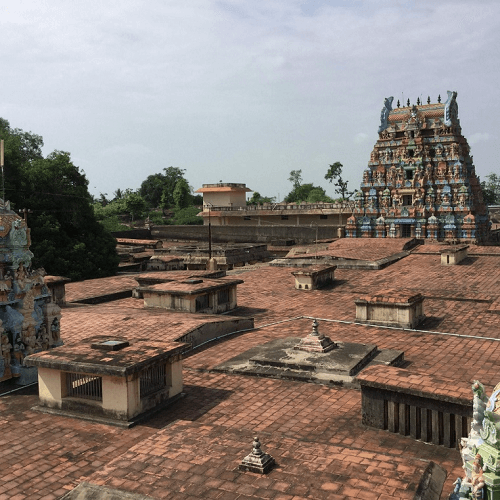
Brahadambal Temple is a prominent place present in the Pudukkottai. Despite having magnificent architectural style, the crowd turns out to remain low around the year. It is considered an architectural wonder due to the amalgamation of Dravidian and Jain architecture. The deities present in the Temple are to be Lord Gokarneshwarar and his consort Brahadmabal. It is believed that the Pallava dynasty king Mahendravarma 1 had constructed this, which is still functional. The building was redeveloped, rebuilt, and renovated by succeeding dynasties like the Pandyas, Cholas, Thondaiman, and Nyakers kings. The Temple is known by various names like Thirugokarnam, Kokarneshwar, and Gokarneshwar Temple. The cave temple comprises architectural features, carved pillars, 30 important inscriptions dating (7th century-17th Century), and exquisite relief sculptures. 2. Sittanavasal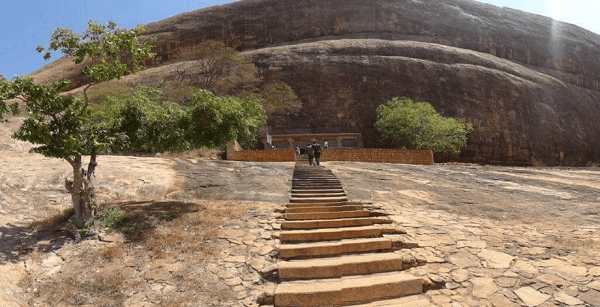
It is one of the most famous caves present in the Pudukkottai. Sittanavasal is under the Archeological Survey of India (ASI). It is a "must-see" site listed by the ASI. The ASI has labeled it as Adarsh Smarak Monument. Paintings placed inside are of Jain Temple. Little paintings are left, but they are immensely beautiful. It is a rock-cut monastery, claiming that the Jains in the second Century constructed it. Murals have been painted with mineral and vegetable dyes using bold colors like green, yellow, black, white, and green. The fresco-secco technique has been used in the paintings. The paintings show a gorgeous pond with lotus flowers, buffaloes, elephants, fish, geese, two dancing figures, elephants, and people collecting lotuses. 3. Thirumayam Fort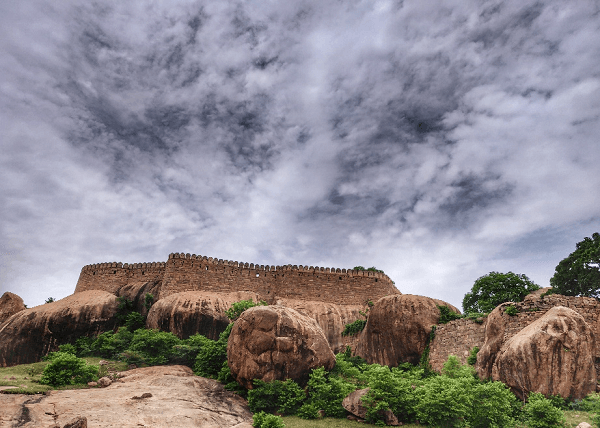
The Fort is spread over an area of 20 acres and is located in the town of Thirumayam on the Pudukkottai-Karaikudi-Highway. The Fort was built by Vijaya Raghunatha Sethupathi, the Raja of Ramnad, in 1687. The Archaeological Survey of India took extensive renovation of the Fort in 2012. Later it was transferred to Raghunatha Raya Tondaiman (brother-in-law). The government of Tamil Nadu has jurisdiction over the site. The Fort is in a ruins state. The Archaeological Survey of India administers the Fort as a ticketed monument. The Fort comprises three entrances: the north, the east, and in the south. Originally, the Fort is called a "ring fort," consisting of seven concentric walls, of which four survive. The shrine is devoted to Ganapathi, Hanuman, Karuppar, and Sakthi. 4. Avur Church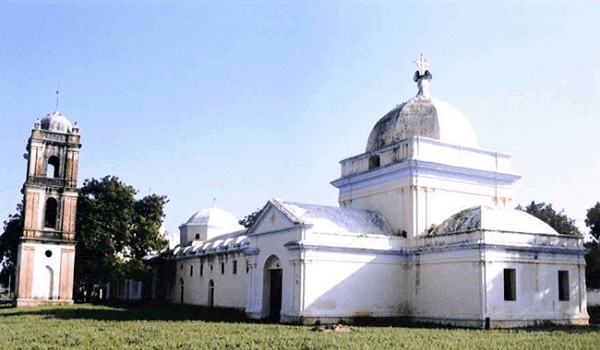
It is Roman Catholic Church situated in the rural area called Avur. It is 28 kilometres far away from Pudukkottai. The church was reconstructed in 1747. Rev. John Venatius Bachet built it. Renowned Tamil Scholar and Italian missionary Joseph Beschi has given his service to the church. Avur Kizhar, the sangam poet was born in Avur. The structure is comprised of eight columns, and it is increased to 56 feet above the ground and shaped like a cross, measuring 28 feet in height, 38 feet in width, and 240 feet in length. The first missionary at Avur was Father Venantius Bouchet, who participated in Madurai Mission in 1688. He aimed to turn the area into a major Christian influence. 5. Viralimalai Sanctuary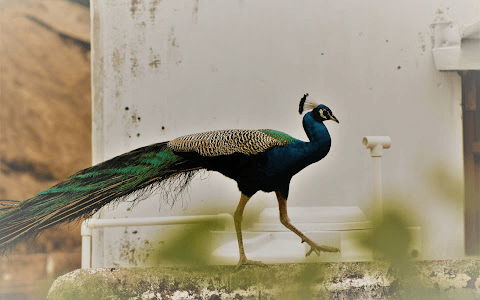
It is a widely popular wildlife sanctuary present in Tamil Nadu. The Sanctuary is admired for its undulating forest, renowned for being the habitat of numerous species. Peacock present in the Sanctuary is the centre point of tourist attraction. The Sanctuary is 42 km away from the Pudukkottai and 30 km away from the Trichy. The most loved peacock in the Sanctuary is Tandikan or Palawan peacock pheasant. A popular temple is also on top of the Temple, called Murugan Temple. To reach this Temple, one has to track 210 steps. Suitable Time to Visit: October - April (Weather remains pleasant and favourable during this month). It is also advised to visit the Sanctuary during the monsoon as Peacocks tap their feet during the rain. Where to Stay Unfortunately, the Viralimalai Sanctuary does not own any guest houses. Major resorts and Hotels will be available in the Trichy (30km) and Pudukkottai (42 km). 6. Viralimalai Murugan Temple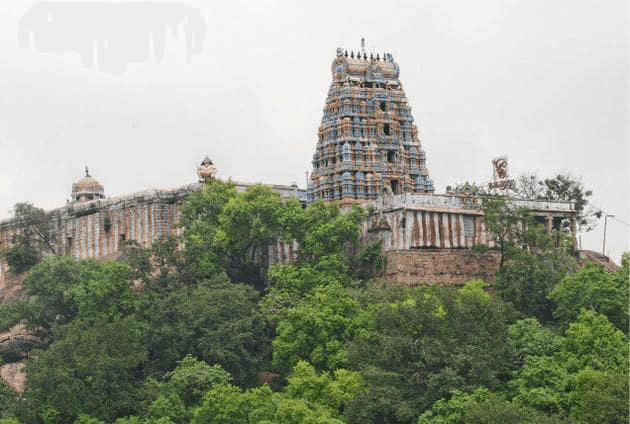
This Temple is devoted to Lord Murugan, situated in the town of Viralimalai. The 15th-century Tamil Poet Arunagirinathar was born in Tiruvannamalai. The poet spent his early days as a seducer of women and rioters. Due to his deteriorating health, he attempted to commit suicide by throwing himself from the northern tower of Annamalaiyar Temple, but with the grace of God, Murugan was saved. He became a staunch devotee and composed Tamil Hymns highlighting and glorifying Murugan. Nearby Pilgrimage Site
7. Narthamalai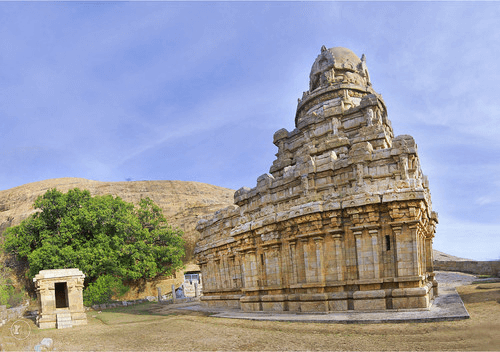
It is a cluster of small hills which is 25 km far away from Trichy on the Trichy-Pudukkottai highway. Temple and oldest rock-cut edicts, like Ashokan edicts, can be seen. The town has Vijayalaya Choleshwaram Temple constructed during the 9th Century. Murtharaiyars, feudatories of the Pallavas, ruled the Narthamalai from the 7th Century to the 9th Century. Medieval Cholas captured the region later. The Vijayalaya Choleshwaram was constructed by the Muttaraiyar, lieutenant, Sattan Paliyili, during the reign of Pallavas. It is dedicated to Lord Shiva, but some historical text suggests that it was built by the first ruler of Medieval Cholas, Vijayalaya Chola, but the claim is highly disputed. Inscriptions suggest that the structure was damaged by lightning and rain. Tennavan Tamiladirayan carried out the restoration work of the structure. In the 11th Century, the place was called Telinga-Kula-Kala-Puram during the reign of Rajaraja Chola I and his son Rajendra Chola I. Vijayalaya Choleswara Temple is constructed in the Nagara style of architecture. It is situated 11 miles Northeast West of Pudukottai. The rock-cut architecture present here is an early manifestation of Chola Art (continued tradition of Pallavas). Other architectures are the Aluruttimalai Jain Caves and the 8th Century Jaina Abode. 8. Kunnandarkoil Cave Temple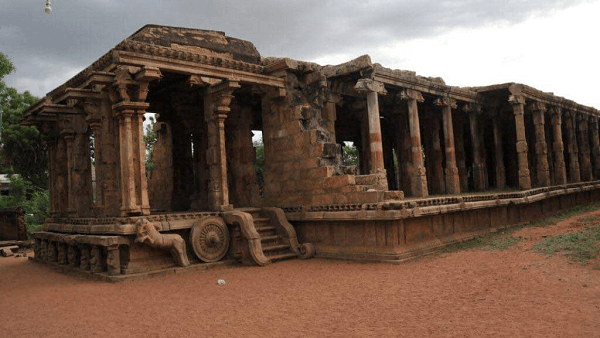
The Temple is devoted to Lord Shiva. It is built on rock-cut architecture, and the Temple is believed to be constructed by the Muttaraiyar Kings. Temple constructed on rock-cut architecture is a specimen of the late Pallava Art. The Temple contains several inscriptions from Cholas, Chalukyas, Pandyas, and Vijaynagar Empires. Department of Archaeological Survey of India is responsible for maintaining and administering the Temple, and ASI has put the structure into the "protected monument" category. The cave has three life-size structures of different forms of lord shiva. The main shrine is on the east, and the sanctum contains pictures of Lingam, the iconic depiction of Shiva. Dvarpalas guard the sanctum on either side. It also has two portrait images which are recognized as Murtharaiyar chief, who had constructed the Temple, and the other his assistant. 9. Tirupperunturai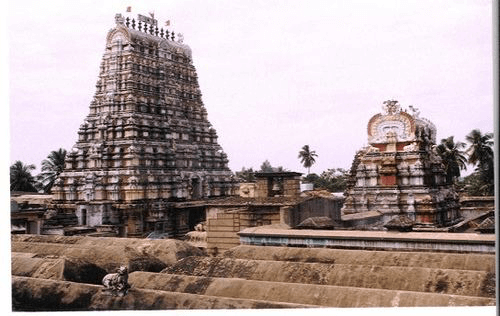
Sometimes, it is also called Athmanathaswamy temple and is present in Avudaiyarkoil Village, close to Arnathangi in the Pudukkottai District. The Temple is constructed to honor the lord Shiva. Manikkavasagar's Tiruvacakam (Tamil Saiva Siddhanta) is a sacred book from this shrine. It is said that Manikkavasagar have converted the ruler to follow Shiva and constructed the Temple with the money. Manickavasagar had constructed this Temple. King Varguna Pandya II gave money to buy good horses to the prime minister, but he instead spent on constructing the Temple. When the King confronted Manickavasagar for the lack of horses or money, Shiva showed one of his thiruvilayadal, a divine sport, in which a Jackal was transformed into a horse, and they were given to the King, and it became the Jackal again. This Temple symbolizes the Temple architectural skills of ancient Tamil engineers and sculptors. The Temple spans over 10 acres of land. Sangam literature has been called different names like Chaturvedamanagalam, Sivapuram, Vadavur, Akasa Kailasa, Shivapuram, Kokozhi, and Adi Kailasa. Some of the festivals celebrated here are Thiruvadirai (Tamil month of Maragazhi (mid-December-mid- January) and Tirumanajanam (mid-June- mid-July), and each festival for the last ten days. 10. Chithannavasal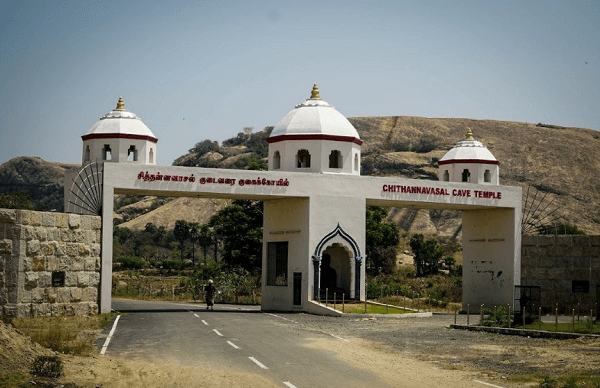
It is a prominent tourist destination in the Pudukkottai District. Jain monks used to live in hillocks and caves to perform their ascetic life. They developed the hill to perform rituals. Jain beds and temples are available in the Sittannavasal and its surrounding territories. Brahmi Tamil script inscriptions are found near the bed, and the Jain Beds are known as the Ezhadi pattern. Jain Temple, present in the Chithannavasal, comprised of the Mahavir Statue on both sides of the wall, is referred to as the Arrival temple and "Meditation Hall". Archaeological Survey of India excavation shows that the surroundings of the Chithannavasal have unearthed burial pots. These pots are known as Muthumakkal Thazhi. Dead remains of the Jain Monks are kept in a pot and buried in the burial ground.
Next TopicTourist Places in Hubli
|
 For Videos Join Our Youtube Channel: Join Now
For Videos Join Our Youtube Channel: Join Now
Feedback
- Send your Feedback to [email protected]
Help Others, Please Share









